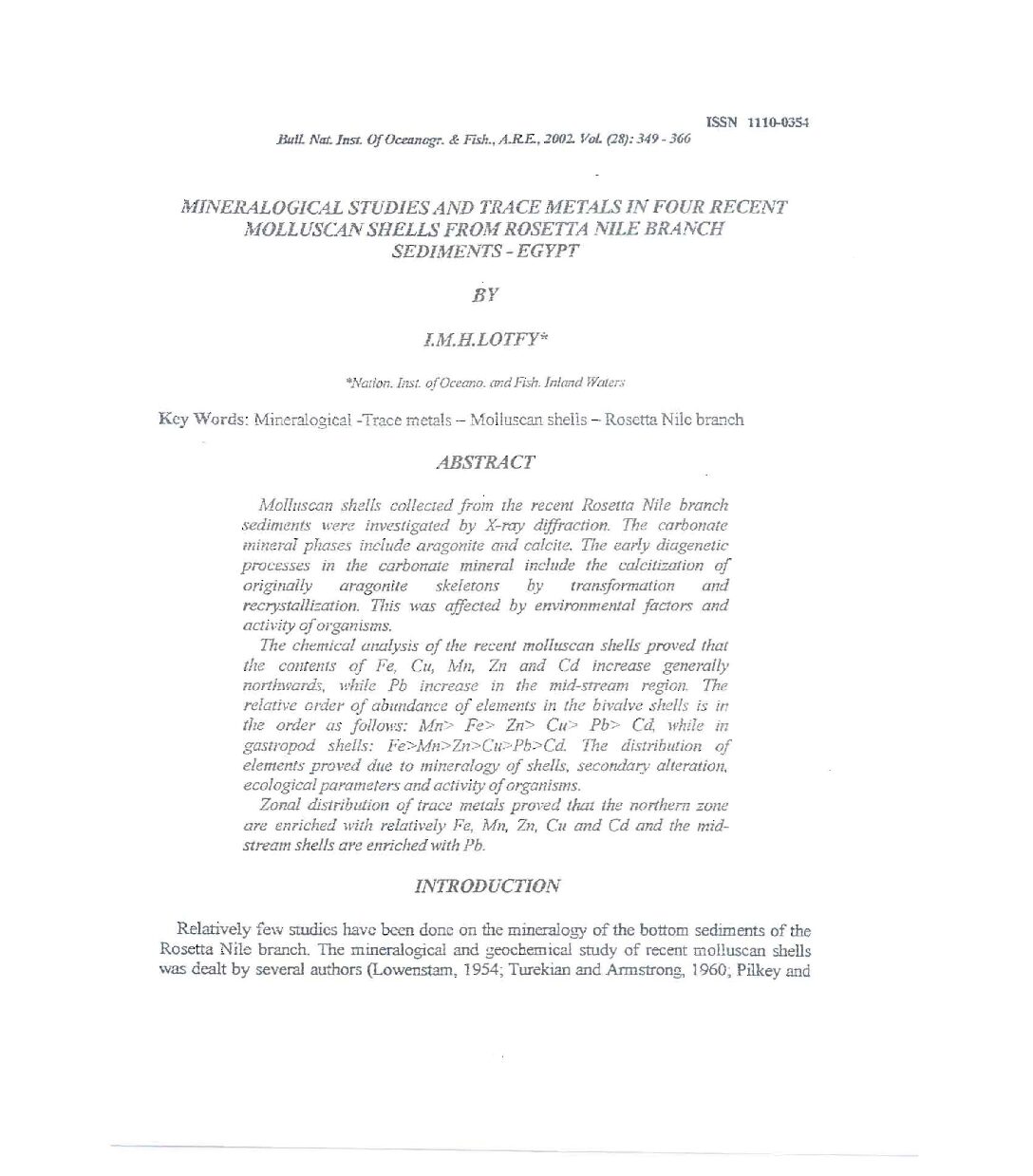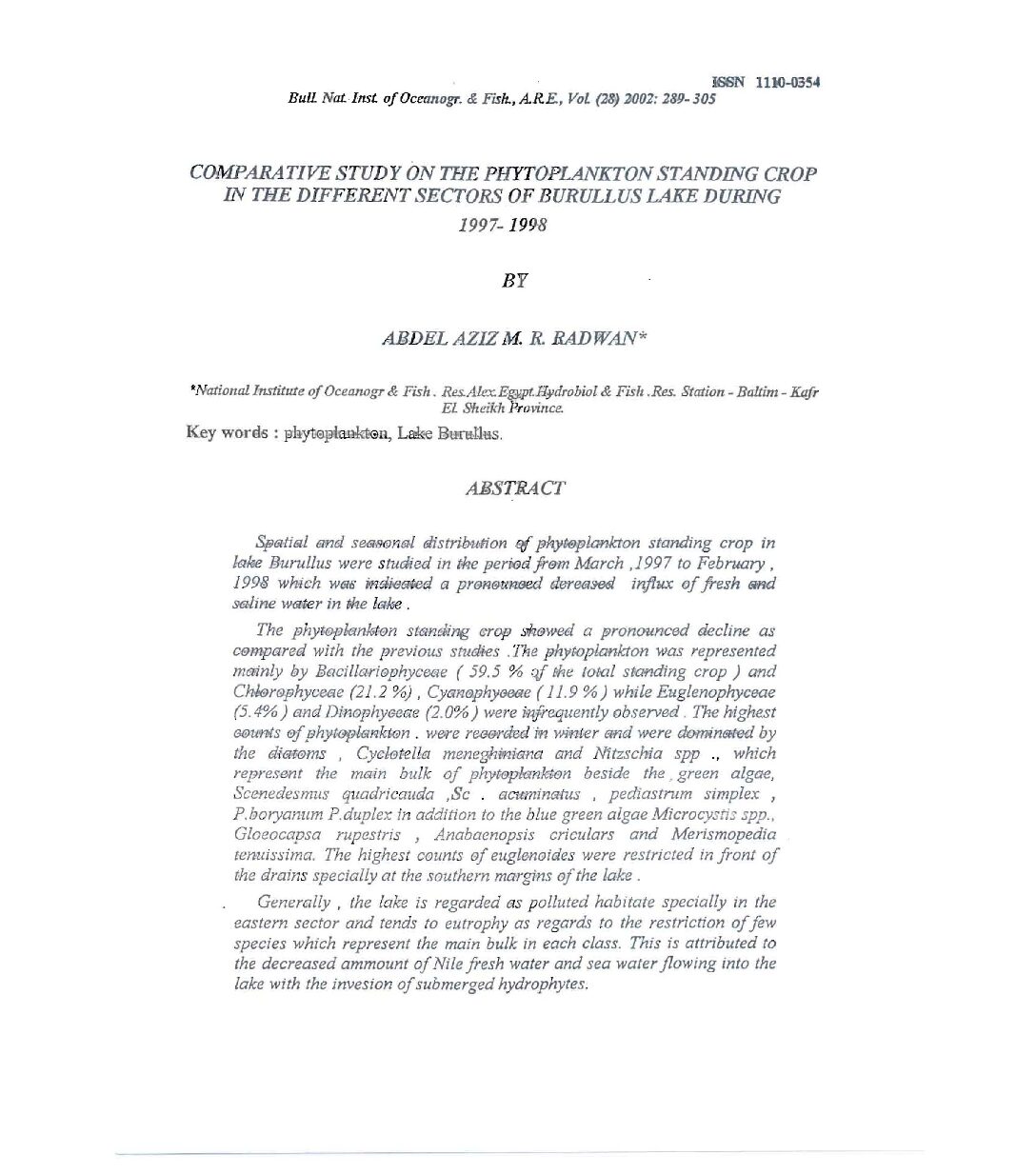Categories
vol-28MJNEr~LOGIC4LSTUDIES AND TRACE lltETALS IN FOUR RECENT
;~10LLUSCANSHELLS FRO~{ROSETTA NILE BRANCH
SEDIMENTS – EGYPT
BY
IMH.LOTFY*
*Nmion. Ins;. o.fOceano. and Rsh. Inland Plaler:;
Key Words: Mineralogical-Trace metals – Mollwocan shells – Rosetta Nile branch
ABSTRACT
Molluscan shells collected froin the recent Rosetta Nile branch
sediments were irrvestigated by X-ray diffraction. The carbonate
mineral phases include aragonite and calcite. The ear~v diagenetic
processes in the carbonme mineral include the calcitization of
originally aragonite skeletons by transfonnotion and
recrystallization. This was affected by emironmefltal factors and
actiVity oforganisms.
The chemical analysis of the recenJ molluscan shells proved thm
the colltents of Fe, Cu, lvfn, Zn and Cd increase generally
northwards, while Pb increase in the mid-stream region The
relative order of abundance of elements in the bivalve she!!s is in
the order as follows: l\1n> Fe> Zn> Cu> Pb> Cd, while m
gastropod shells: Fe>Mn>Zn>Cu>Pb>Cd. The distribution of
elemei!ts proved due to mineralogy of shells, secondary alteratioll,
ecolOgical parameters and activity oforganisms.
Zonal distribution of trace metals proved that the northern zone
stream
are enriched
shells are
with
enriched
relatively







